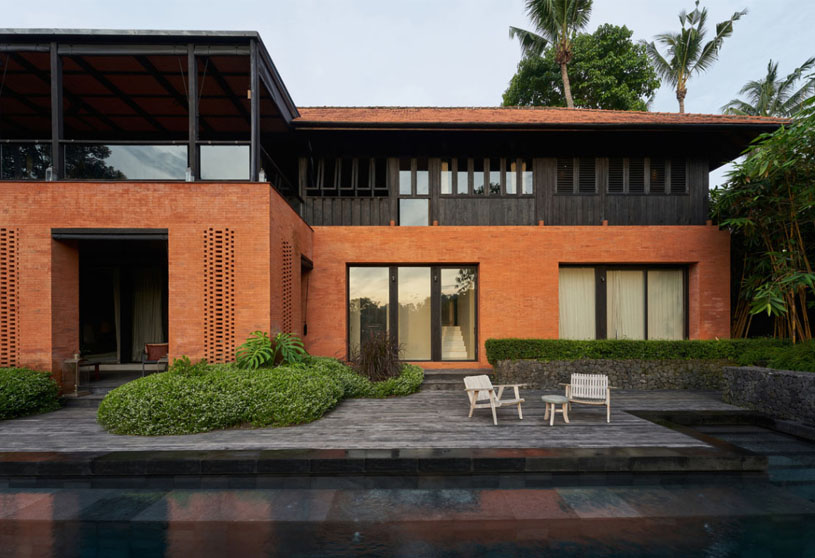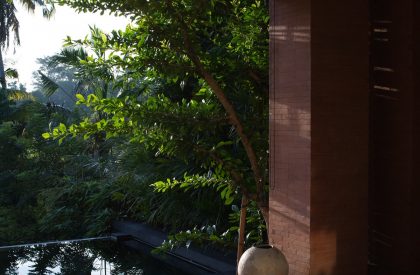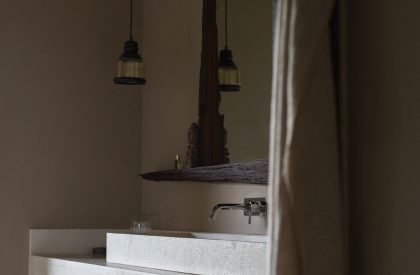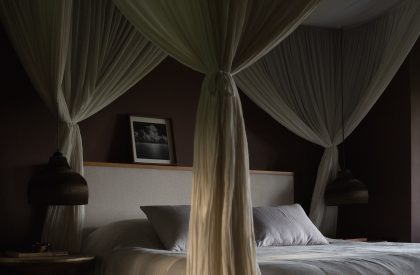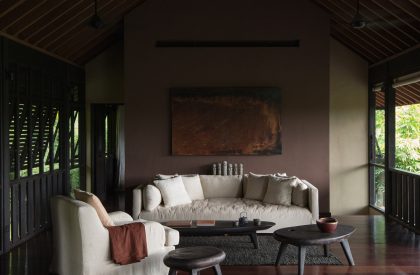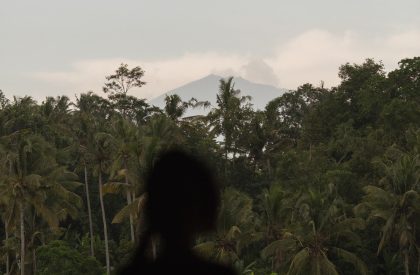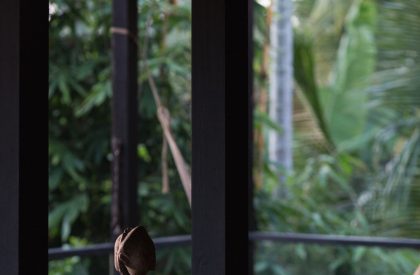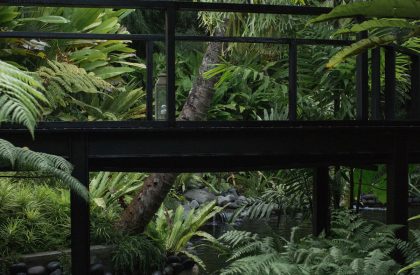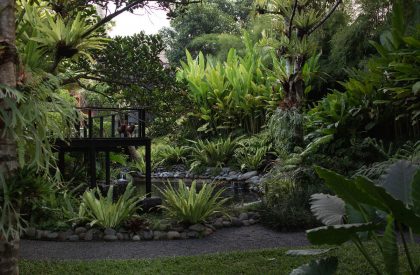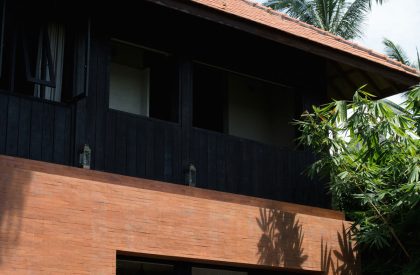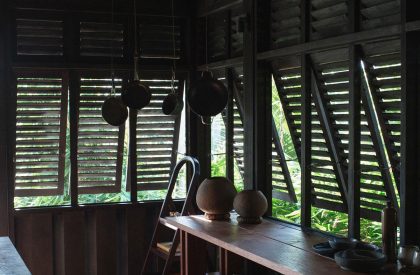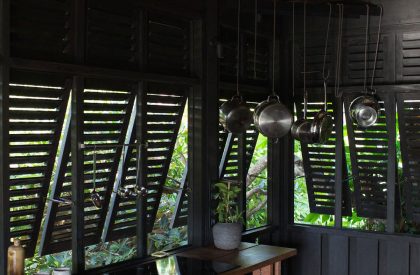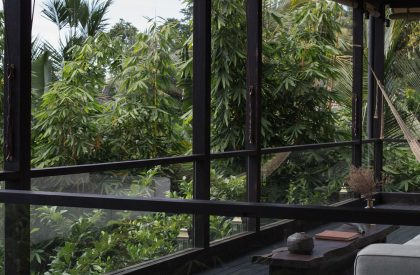Excerpt: Rumah Fajar, which means “The House of Dawn” in Bahasa Indonesia, designed by Studio Jencquel, is a modern architectural interpretation of a traditional Balinese longhouse bale Agung. The abundant use of volcanic stone represents an allegorical element of the completed design, entwining the great volcano and the “great pavilion” in its shadow. Nestled seamlessly into a lush hillside and facing the rising sun, the luxurious 4-bedroom Rumah Fajar presents a humble abode that is not so humble, after all.
Project Description
[Text as submitted by Architect] Rumah Fajar, which means “The House of Dawn” in Bahasa Indonesia, is a modern architectural interpretation of a traditional Balinese longhouse bale Agung. Boasting spectacular views of Bali’s most sacred volcano Gunung Agung, the home is steeped in the local vernacular through its design and choice of materials. Studio Jencquel began building in August 2017 — simultaneous with the eruption of Gunung Agung — and finished construction two years later in August 2019. The abundant use of volcanic stone represents an allegorical element of the completed design, entwining the great volcano and the “great pavilion” in its shadow. Nestled seamlessly into a lush hillside and facing the rising sun, the luxurious 4-bedroom Rumah Fajar presents a humble abode that is not so humble, after all.

Entering the space through a small, unpretentious Balinese door known traditionally as angkul-angkul, twin gate guardian statues known as Men Brayut sit on either side upon the local terracotta brick gate, blessing all who pass with strength, fertility, harmony, and prosperity. Past the threshold lies a candi (a shrine or temple), here playing the role of aling-aling, an obstacle often seen in the entrance to Balinese homes intended to deflect and confuse unwanted guests or spirits.
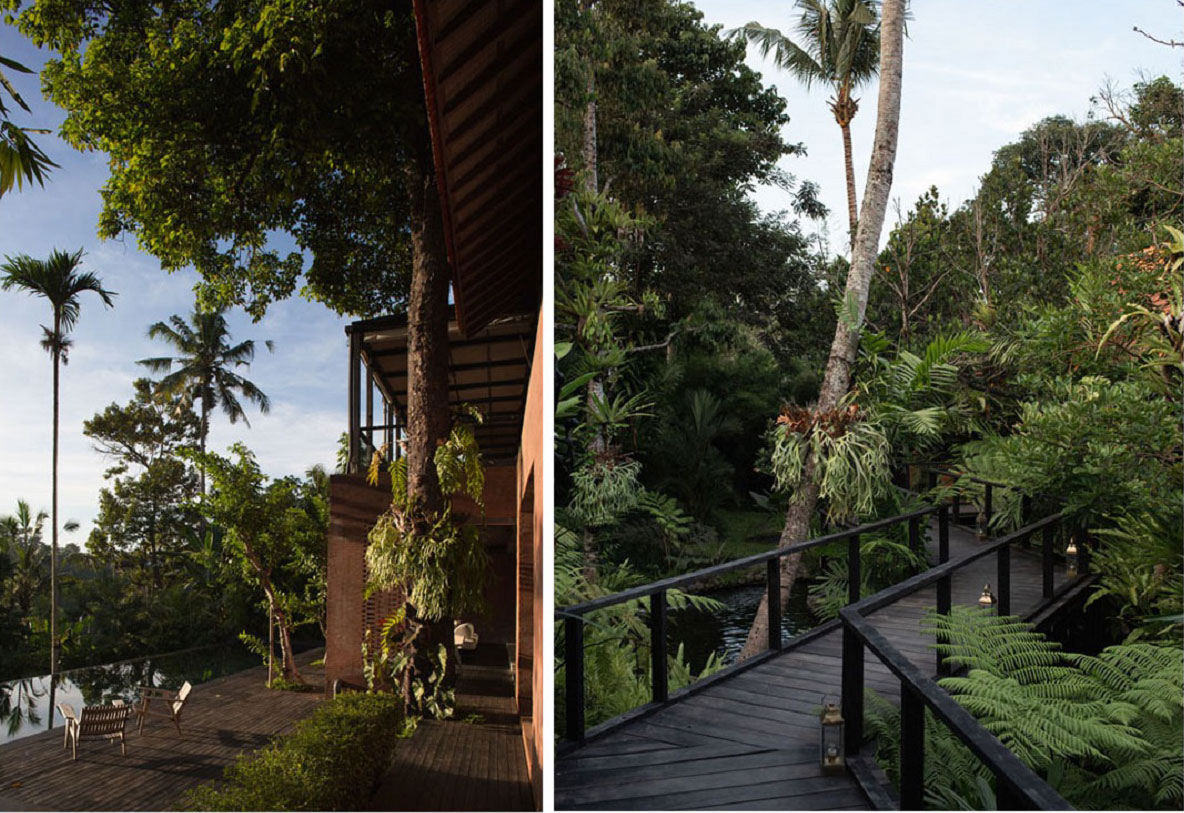
The house is accessed by a sinuous bridge hovering above a large koi pond; a zigzag path designed not only to confuse spirits, but to give one the elevated sense of entering a tree house with a castle-like feeling of protection. Ensconced among a verdant tropical garden of coconut palms, tree ferns, heliconias, orchids that emanate a whiff of chocolate — along with fruit-bearing trees such as durian, breadfruit, and rambutan — this journey into botanical reverie culminates at the main entrance door.

From the outside, we see how Gunung Agung and traditional Balinese living inform the design of Rumah Fajar. The house blends into its wild natural setting along the hillside in great part due to the combination of only two dominant materials — Bata Tulikup, a Balinese terracotta brick from Tulikup village; and charred ironwood following Japanese techniques of Shou-Sugi-Ban. Bale agung m eans “great pavilion”, and here the great m ain pavilion of the house is elevated upon an elongated brick “podium”. This creates an exterior view ruled by ironwood, brick, and the sacred volcano — all reborn from earth with strength and beauty in fire.

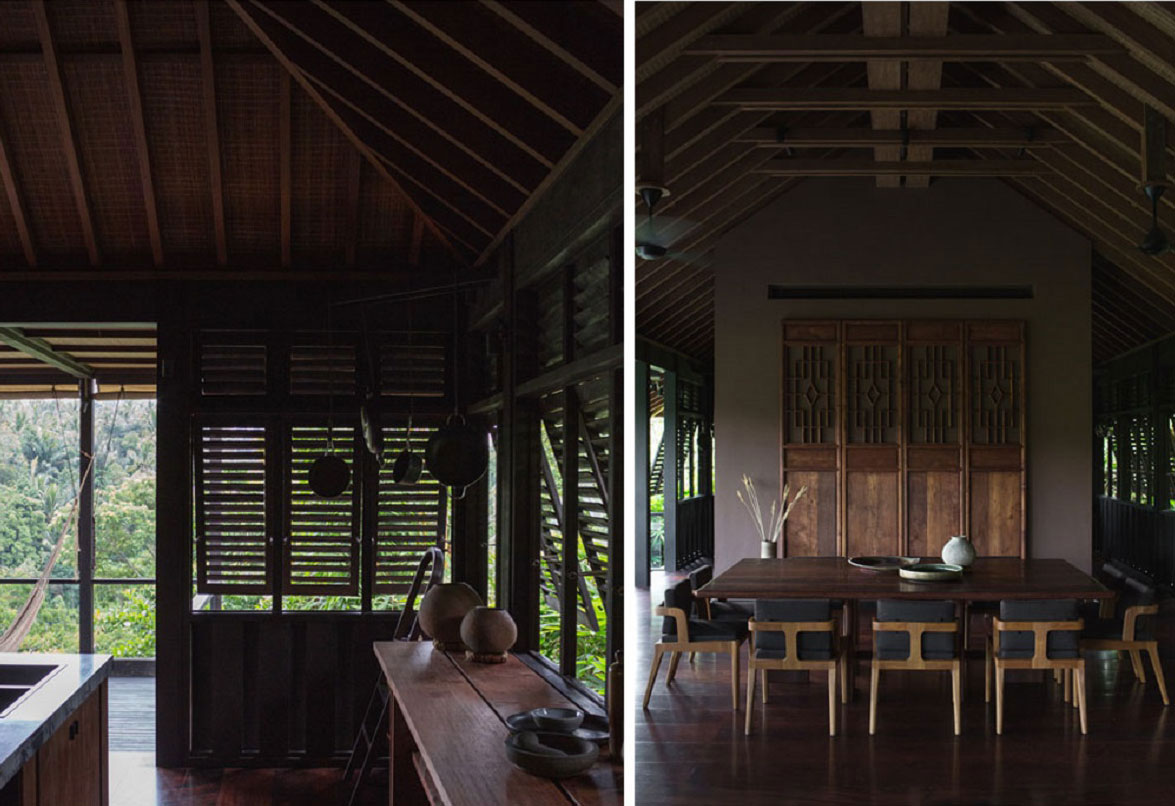
In creating the main frame of the house, a steel structure was designed to saddle the timber roof structure to a millimeter precision; and to perform with the highest degree of endurance in case of an earthquake. H-beams are positioned on the floor plan in a similar fashion to the timber pillars found in the traditional Balinese longhouse, reinforcing the idea of a modern vernacular. The overall design is meant to be open and not boxed in, with ample air flow through cross-ventilation. The landscaping and gardens, designed by Maximilian Jencquel, supplement the home with cooling shade and plenty of space for gentle breezes to pass through.


